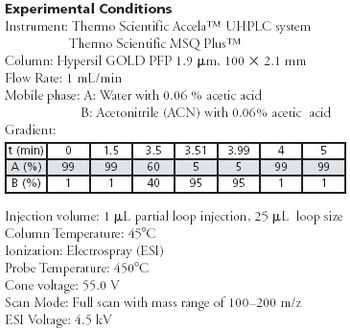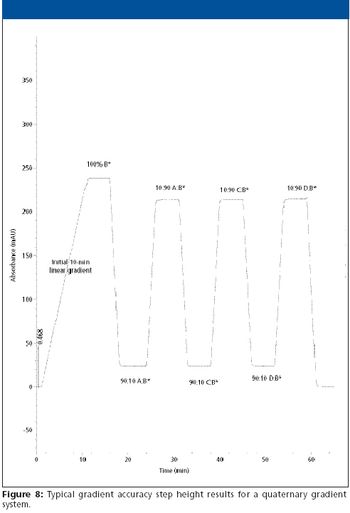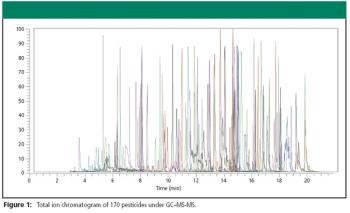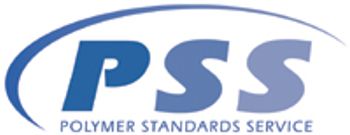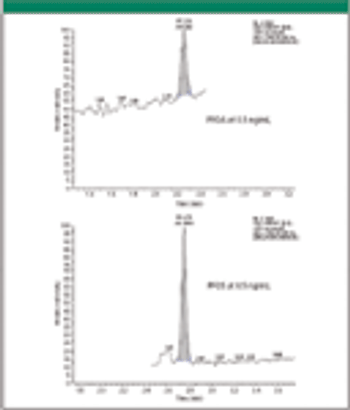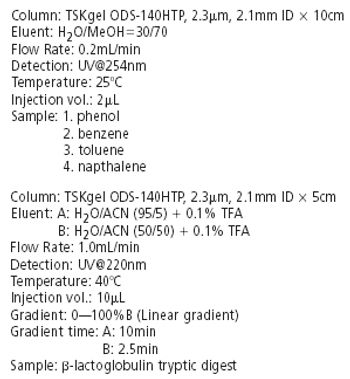
The Application Notebook
Short analyses time and high resolution are in great demand from R&D and QC departments within the pharmaceutical industry. Sub-two micron ODS reversed phase columns have recently been introduced to meet these requirements, but these columns require an ultra-high pressure HPLC system to achieve optimum performance. TSK-GEL ODS-140HTP, 2.3mm columns from Tosoh Bioscience have been developed to offer a combination of short analyses time and high resolution separations that can be run at modest pressures, making these columns compatible with conventional HPLC instrumentation. The polylayer bonding chemistry of these columns results in highly efficient and physically stable columns when operated at high linear velocities. In addition, TSK-GEL ODS-140HTP, 2.3mm columns can be efficiently operated at pressures not exceeding 9000psi in UPLC® and other ultra-high pressure HPLC systems, as well as in traditional HPLC systems.









